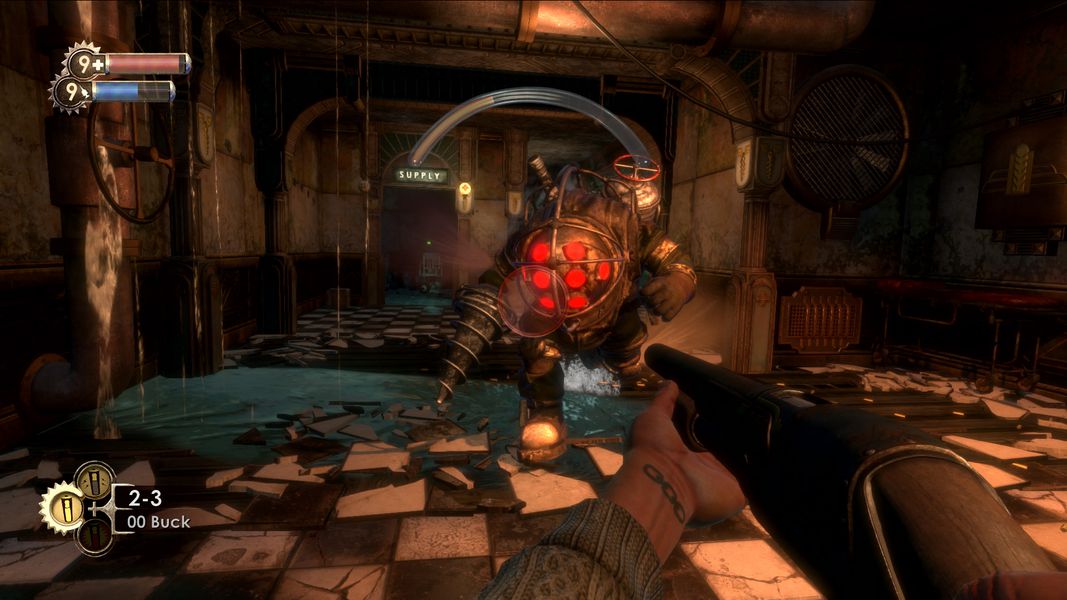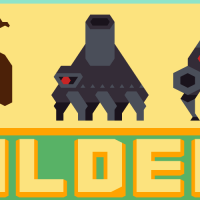In the words of Dave Russell in this article, “Diegetic components provide the player with cues and information without distracting them from the narration of the world, ” while non-diegetic components provide information through elements not in the game world. Spatial components “are visualised within the game world but are not part of the game world… and meta representations are components that are expressed as part of the narrative, but not as part the game world.”
Using these definitions, I offer a breakdown of UI elements in one of my favorite video games ever – Bioshock.
A few examples of diegetic UI are your weapon (if that counts), the hacking screen that pops up when you try to hack a vending machine or other mechanism, music that occasionally comes up on various radios, and the walkie-talkie that pops up when you get an audio recording that tells you the in-game story.

The non-diegetic elements of the UI, which, despite their art deco illustration that matches the environment, are only visible to the player, are as follows. In the top left corner of the HUD are the player’s health bar and “salts” bar (which is energy used to use Vigors). The same is true for the little interface at the bottom left, which shows the player’s ammunition count. Next up is the weapon-switch screen, a non-diegetic component that pops up when the player presses the “switch weapon” button.

A spatial component that comes up very often is the text and yellow glow that you see when you look at a nearby item like money or dropped ammunition.
Some meta components (that might be considered diegetic by some) are water droplets that cover the screen and the blurry effect that comes on the screen when the player drinks liquor in-game.

